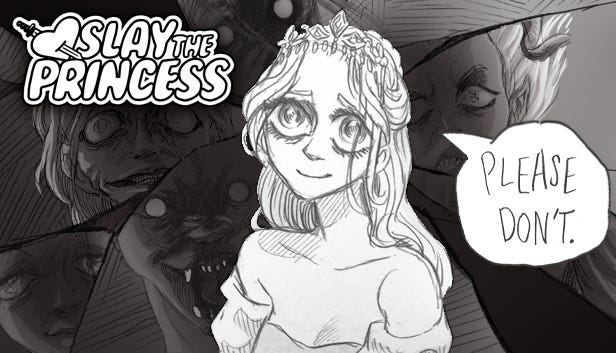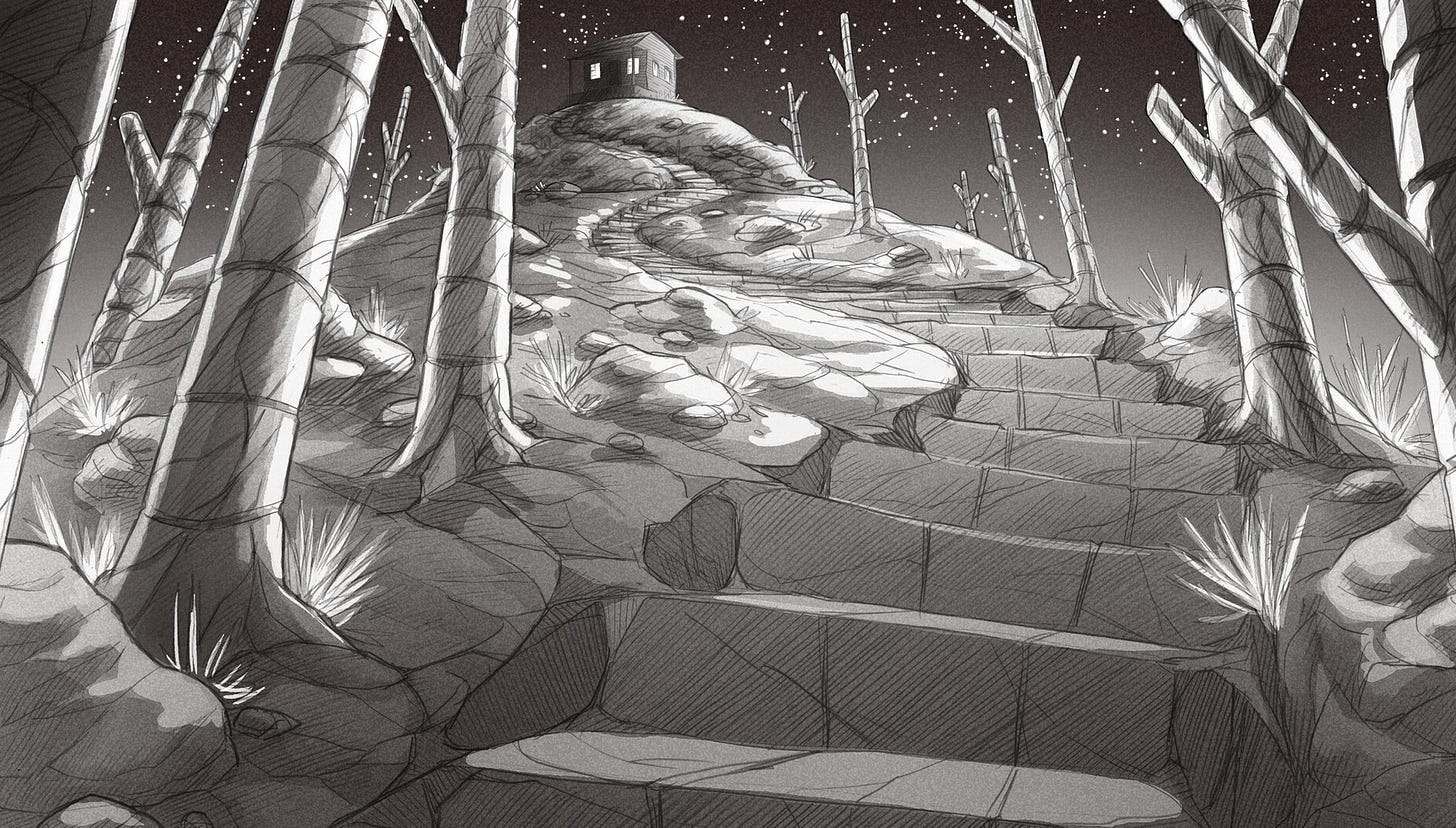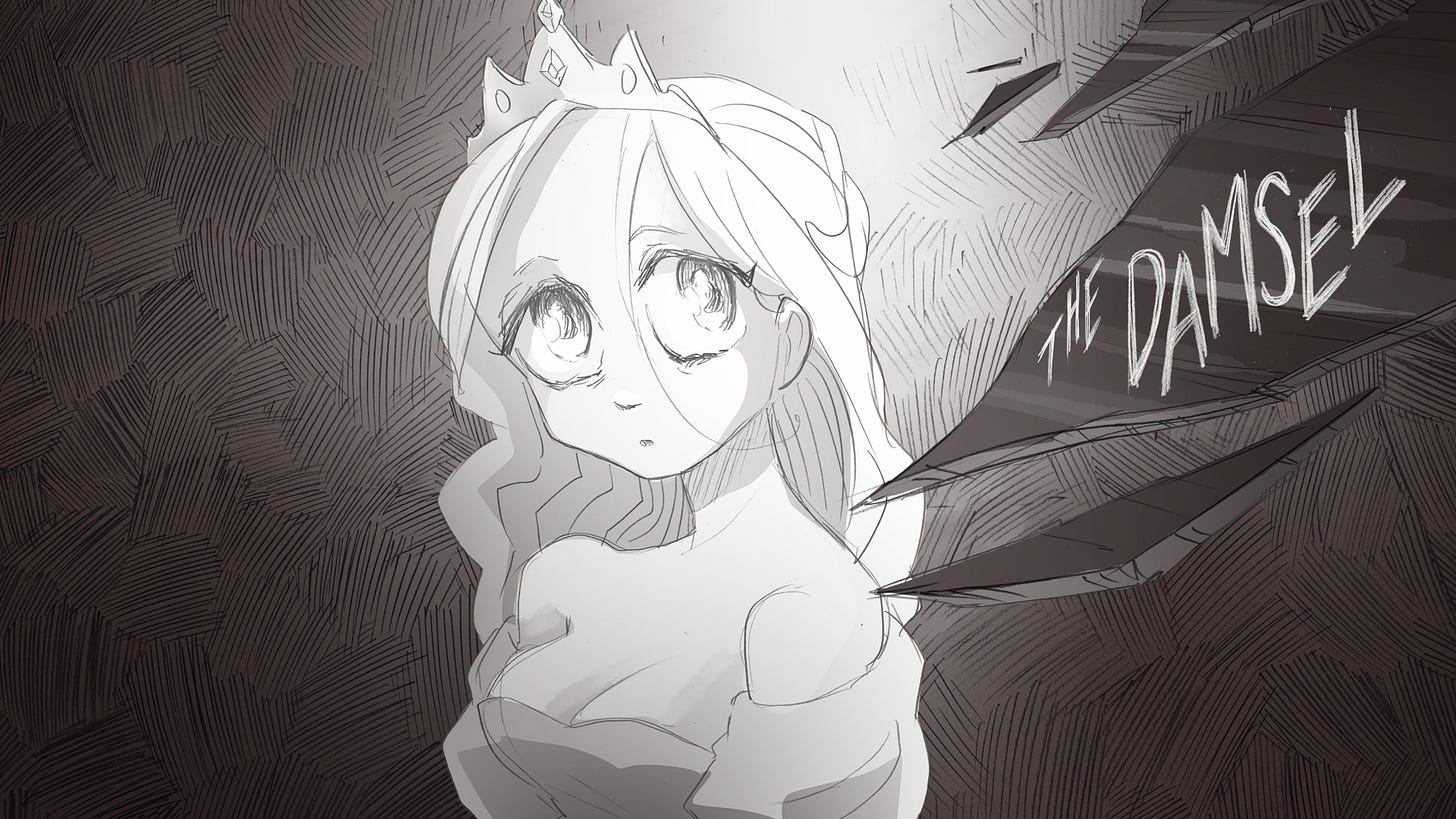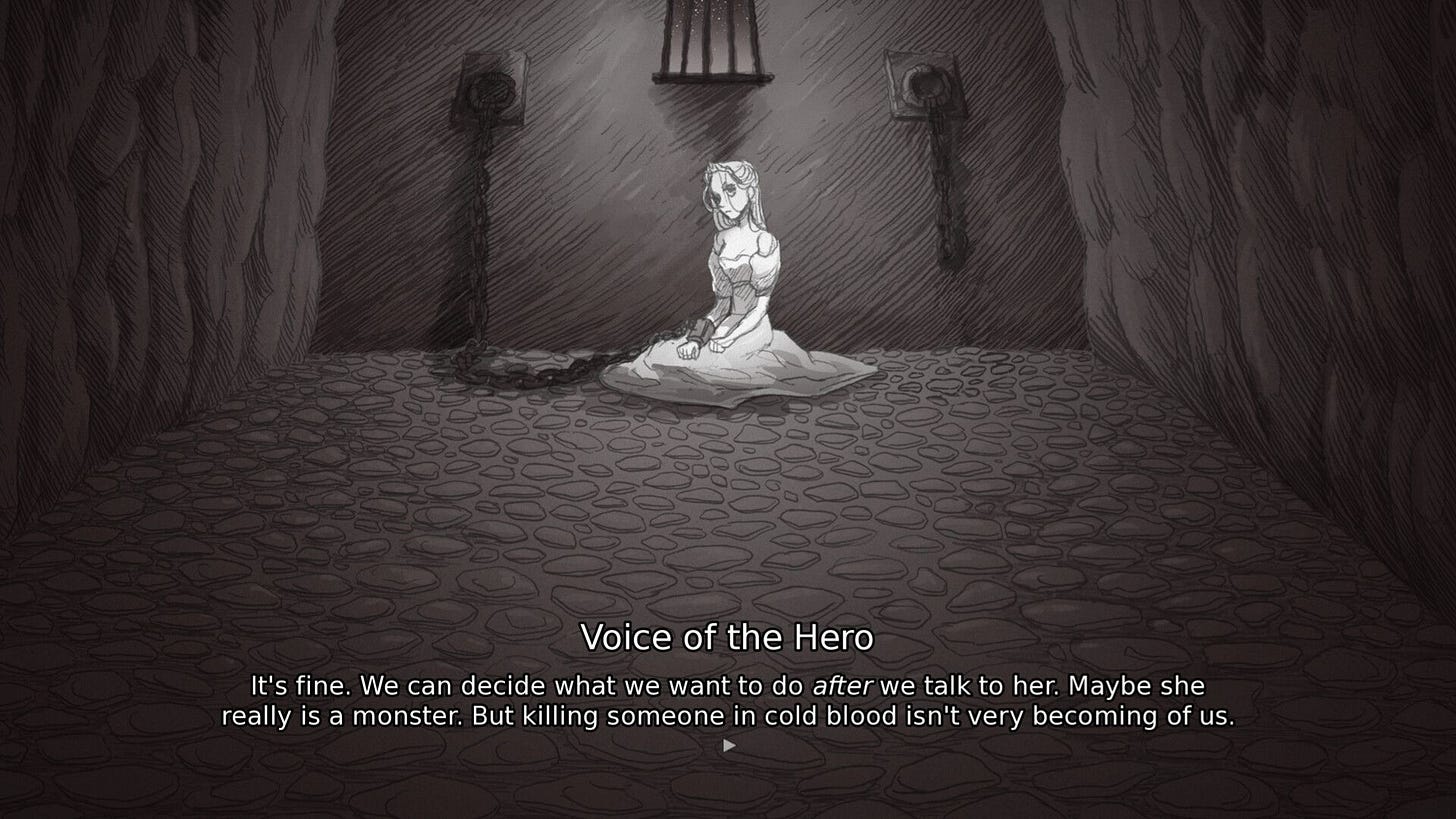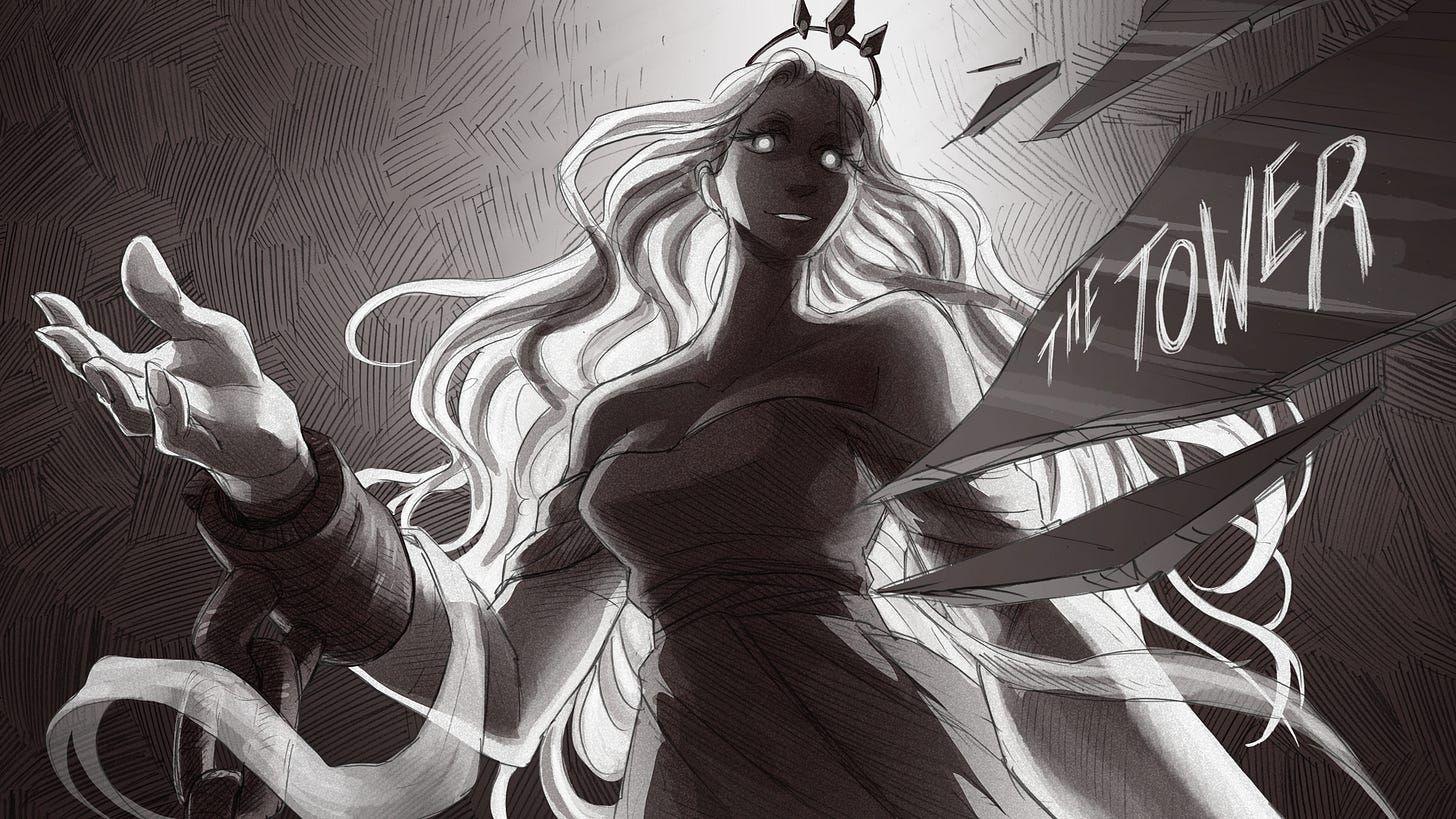Slay the Princess
You trust me, don't you? Why wouldn't you trust me?
What a strange, beautiful little game. Reduced to bare essentials, Slay the Princess is a visual novel with an evocative and simple sketched aesthetic. Focused primarily on the choices the player makes, Slay the Princess is winding and strange little tale seeking to expose our perspectives through wobbling, shifting moral realities.
That is to say, dear reader, Slay the Princess is great and I highly recommend the experience. You can easily roll credits and wrap this in 2.5 hours—a marvelous feat by todays standard—and will likely find yourself returning for more paths and stories.
I do want to warn the reader to avoid all spoilers at all costs—the story relies on you remaining in the dark and exploring options you create scenarios for. Following the tradition of choose-your-adventure novels, Slay the Princess neatly conceals the rough edges common in CYA stories; namely characters lacking personality or real intent because they must fulfill a multitude of options or stories remaining flat to allow options to exists. What Slay the Princess does so well is explore the nature of loss, regret, and a fear of change in a metafictive way that doesn’t overstate its welcome or overwhelm my taste.
A truly indie horror game that will ask you to dig out the darkest parts of yourself as you attempt to figure out if you even should slay the princess. Wonderfully written, immaculately acted by Jonathan Sims of the Magnus Archive and Nichole Goodnight, Slay the Princess is an engrossing, unique twist on the horror visual novel space that seeks to unnerve and disturb the player, while asking bigger, more thoughtful questions. If you don’t know if you love visual novels, this is a great place to start in my opinion.
Before I dive into spoilers, I urge you to try this out. If you haven’t played a visual novel before this has so much going for it from its unique visual style to the unbelievable narration by Jonathan Simms from The Magnus Archive.
SPOILERS AHEAD
Don’t say I didn’t warn you
So you’re still here, amidst the Shifting Mound and the Long Quiet. You’ve felt the presence of multitudes, the abject singularity of perception. Slay the Princess is diving deeply into ontology, perception, and laying it upon a fabric of mythology. The Echo is a remnant of some creator—an audacious, bold, ambitious creature that sought to end Death, itself, to gift life unending to a world. Yet, in doing so, created The Shifting Mound and the Long Quiet; two halves of concept of death itself. The Shifting Mound represents the qualities of change, adaptation, interpretation, and the duality of ends and beginnings in Death. While, The Long Quiet is the result and fabric death lies on itself—the emptiness of nothing that we shift and change and grow and die upon. Here, the player assumes the role of the The Long Quiet within the construct of the Echo to remain trapped within an endless scenario attempting to kill the princess over and over and over, but dying instead resulting in the new beginning of the cycle. Each time we enter this cycle things begin to change and The Long Quiet develops new perspectives, new perceptions of reality, just as the Shifting Mound adjusts their perception. We hit a bit of a Schrodinger situation here—the Shifting Mound adjusts their response soley on how we perceive them (and the situation)
.
For instance if you take the dagger down with you the Princess is immediately on edge, noted by the shades of red text. Yet, if you skip it, the text and speech is softened, more gentle. Consider that as we begin to perceive ourselves that perception itself changes both what we see and how we see. If you only identify your own mistakes you may perceive yourself a failure, despite your successes, which go unnoticed against the sheer perceived size of even a small mistake. Dear reader, I don’t want to belabor this point too much—I’m thoroughly impressed with Slay The Princess’s ability to capture such a difficult nuance in play and narrative. Moreover, this deeply introspective story constructs its metafictive approach within the experience of the Long Quiet accounting for us, the player, and our outside perspective layering our experience and play into the game. Much like Inscryption, Undertale, and other metafictive, interactive stories, we, the gamer, must be accounted for.
As the game presents and limits our options, our own perspectives shift and are forced to adapt to the realities we created. At its core, Slay The Princess is asking players: “How and where do your morals shift?” “How has your perception changed the thing you perceive?” Because during the various cycles you force The Long Quiet into horrific, gruesome, and traumatizing scenarios, while uncovering the darkest character traits within themselves and their perceived (The Shifting Mound). Knowing that the path forward is paved with death, violence, hate, fear, mistrust, soley to shape a concept enough to perhaps murder it is far from morally clear. And Slay the Princess does not ask you to make morally clear choices—it asks you to simply choose and reap the results. In this way, Slay the Princess attempts to determine the ways in which perception is both a tool to understand and a tool to shape. Thus, the gamer’s own self is adjusted and warped by the ways they are forced to eventually finish the Shifting Mound. I think, too, the game plays with this particular element of metafiction by removing player agency (namely during backstab sequences) and creating scenarios that the player naturally rails against. So in a bare essentials sorta way, Slay the Princess knows very well that we are playing it and is prepared to adapt to it. I’m not sure its neatly and concised done as in Undertale, but I find it successful nonetheless.
When the game pulls back its veneer we enter a space so endearing. Two characters entwined and separated by irrevocable forces, but intrinsically pulled together must attempt to reconstruct the fragments of themselves. Or better put enemies to friends to lovers. What I love the most is the earnest confidence Black Tabby studios presents and the execution of a uniquely singular style
.


